Each of us has been burned more than once - by fire, a hot object, or chemicals. Some simply burned to blisters in the sun, forgetting about caution for a while. People usually prefer to cope with the consequences on their own, resorting to medical help only in the most extreme cases. So the question of whether it is possible to puncture a blister from a burn is as relevant today as in former times. And you need to look for the answer to it meticulously, because at least your appearance depends on the correctness of your actions (scars don’t make anyone look good), and at most, your health and life.
Something about burns
Of course, serious injuries rarely occur. But you need to know the basic theory of how to obtain them, only then will you form your own, and correct, opinion about whether it is possible to puncture a blister after a burn.
Blisters can appear only starting from the second degree of burn, and of any origin - chemical, thermal or solar. At the first stage, it manifests itself only as redness of the skin with accompanying symptoms: peeling of the epidermis, rise in temperature, etc.
Deciding whether it is possible to puncture a burn blister is only permissible if it is small. The estimated maximum size of the damage is the size of your palm. Otherwise, the only thing in your power is to hospitalize the victim as quickly as possible. Burn shock is a serious thing, and the mortality rate from it is higher than from tissue damage.
There is no consensus among doctors about whether it is possible to puncture a burn blister. Many traditionalists resort to this step only in the most serious cases, when suppuration is noticed, the symptoms of which are cloudiness of the subcutaneous fluid and obvious inflammatory signs around the affected area.
However, the blister cannot resolve on its own. If it is not opened (or it does not burst on its own), then the exudate inside will sooner or later provoke inflammation. In addition, the bubble may burst at a time when there is no disinfectant at hand. And contact of an open wound with the same clothing may well lead to the same inflammation.
So we can say the question is formulated incorrectly. Not “is it possible to puncture a burn blister”, but “who should do it and how.” The ideal option is to trust a professional to pop the blister under sterile conditions.
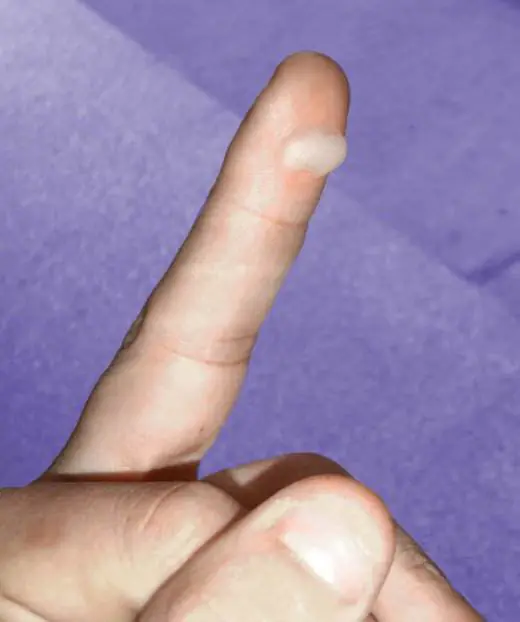
Popping blisters
With minor lesions, many consider it stupid to go to the clinic and stand in line. Moreover, no one will call an ambulance. If doubts about whether it is possible to pierce a sunburn blister (as well as any other) are resolved in a positive way, the procedure must be approached responsibly. A disposable syringe is purchased at the pharmacy; It is not worth replacing it with a needle calcined on a hotplate. You will not achieve one hundred percent sterility, so infection is very likely.
Before puncture, the surface of the burn and the area around it are treated with alcohol. When the operation is performed, the leaked liquid is first removed, then the released membranes are picked up and cut off with tweezers, and then the wound is treated with tetracycline ointment. Applying a sterile dressing is mandatory - it will prevent infection of the open wound.
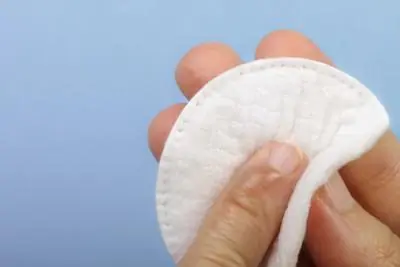
Stimulation bursting
Not everyone has the determination to puncture a blister – and don’t. You can do without extreme measures. It will burst on its own if you lubricate the burn with a solution of potassium permanganate (5 mg per 60 ml of water) in the morning and with sea buckthorn oil in the evening. Moreover, the gap will be very small, the liquid will flow out, the skin can be cut off, and a new one will begin to grow on the wound.
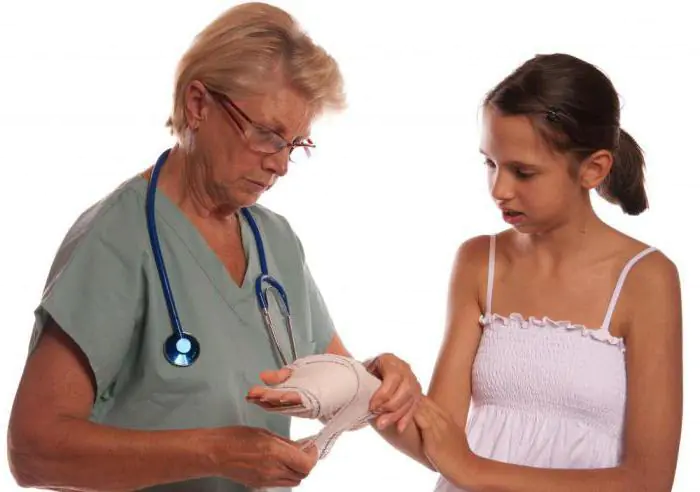
Primary care
In many everyday situations, you can completely avoid the need to think about whether it is possible to puncture a burn blister. Small urgent measures - and it simply will not form or will be so small that an autopsy will not be needed. The first thing to do is to place the damaged area under cold water for ten minutes. Or use ice. When the skin has cooled sufficiently, it needs to be treated with Furacilin solution. Small blisters are left alone, only regularly lubricated with anti-burn ointment. For extensive lesions and large blisters, consult a doctor immediately.

Is it possible to pierce a burn blister with hogweed: expert opinion
In addition to the usual dangers, burns can also be caused by plants. The most likely encounter is with hogweed. Moreover, its juice does not cause chemical damage, but makes the skin very sensitive to sunlight. In fact, you get a UV burn. Moreover, a person can detect it even half a day after exposure.
The self-rescue algorithm is simple:
- If there are no blisters, rinse. If they appear, do not wet them under any circumstances.
- Take measures to prevent ultraviolet radiation from reaching the burn. It’s better to avoid going outside altogether for two days.
- Treat the affected area with alcohol or potassium permanganate.
- Lubricate with a healing agent, such as Panthenol.
- Take medications for swelling, inflammation and allergies.
Do not open blisters, even large ones, yourself! You will be guaranteed infection. If the blisters still swell, run to the doctor.
Thermal burns are a common household injury that causes skin damage and acute pain. If you burn severely enough, blisters filled with liquid appear on the affected area. Treatment of burns with blisters at home is allowed only after examination by a doctor and with his permission. During therapy, you must follow the specialist’s recommendations and maintain sterility.
Causes of blisters
Characteristic blisters form with 2nd degree burns. Under the influence of high temperatures, the upper layer of the dermis dies and begins to peel off. Gradually, a clear liquid accumulates inside. This is a protective reaction of the body, protecting viable tissues from dead skin and the external environment.
The blister is filled with lymph, which contains many white blood cells. They prevent pathogenic bacteria from entering the wound, preventing infection and suppuration. After a few days, the water in the bubble becomes cloudy and yellowish. This is a normal reaction, confirming a 2nd degree burn.
If the affected area is minor and does not affect sensitive areas, such as the face or groin, treatment can be carried out at home. The exceptions are children, elderly people, and patients suffering from diabetes.
First aid
Bubbles may appear in the first minutes after injury. Sometimes this takes several hours, in rare cases - a day.
When treating burns, proper first aid is of great importance. Clear actions in an unusual situation can reduce the risk of complications and increase the likelihood of a favorable treatment prognosis:
- The burned area should be immediately placed under running cool water or immersed in a container filled with liquid.
- Cool the skin for at least 10 minutes. Doctors prohibit using any means other than water and a damp cloth for this purpose.
- Do not apply ice or snow: temperature changes will cause frostbite and tissue necrosis.
The damage should be carefully blotted with a sterile napkin and wait until the wound dries, then fill it with an antiseptic.
- Chlorhexidine;
- hydrogen peroxide;
- light pink solution of potassium permanganate;
- Furacilin.
Treat the affected skin and the surrounding area with anti-burn ointment with antibacterial action. Suitable for this:
Apply a sterile gauze bandage on top and change it every 4 hours.
Blisters most often occur upon contact with boiling water, hot oil, steam, or fire. If the burning sensation is severe, you can take Analgin or another pain reliever.
What to do at home
If treatment is carried out at home, it is necessary to apply a wound-healing ointment under a sterile bandage twice a day, carefully observe hygiene and try to prevent the bubble from bursting. Gradually, the damaged layer of skin will be restored, scarring will begin, and the blister will dry out. The dead film will peel off, revealing healthy epithelium.
If damage to the bladder does occur, efforts must be directed toward preventing infection and healing the open wound. External antibiotic-based agents and combination preparations are suitable for this.
Pharmacy products
If a blister begins to swell on the skin from a severe burn, you should immediately use medications that stimulate cell renewal and start the regeneration process. The pharmacy offers a wide selection of anti-burn medications. Well proven:
- Bepanten ointment. It contains dexpanthenol, which anesthetizes the wound, relieves swelling and eliminates inflammation;
- Levomekol. This is an antibiotic that prevents infection and accelerates the healing of damaged areas;
- Argosulfan. The ointment contains silver ions, which soothe burning sensation, destroy pathogenic microflora and restore the integrity of the skin;
- Eplan. The product has no contraindications and is good for thermal burns with blisters;
- Panthenol. A drug based on dexpanthenol promotes rapid tissue regeneration.
It is recommended to treat a burst blister with Furacilin ointment, Baneocin or Vishnevsky's liniment. The peculiarity of these drugs is that they have a powerful antimicrobial effect.
For daily dressings you need to purchase everything you need. You will need:
- sterile bandages and gloves;
- antiseptic;
- gauze swabs for applying medication;
- anti-burn ointment.
Traditional methods
If necessary, burns with blisters can be cured using traditional methods. Their use is allowed for small blisters when their integrity is not compromised:
- An ancient method of treating injuries from steam or boiling water is to apply sea buckthorn oil to the burned area. It soothes pain and relieves irritation. The wound should be lubricated with a thin layer, covered with a sterile cloth and left for several hours. Repeat the treatment 2 times a day.
- Aloe juice accelerates skin regeneration. The bottom sheet should be washed, minced through a meat grinder and the juice extracted. Soak gauze with it and apply a lotion to the sore spot for 3-4 hours.
- Grate fresh carrots, wrap the pulp in gauze and apply to the injury for 4 hours. Repeat the procedure twice a day.
- Dilute three tablespoons of starch with a spoon of water. Spread the homogeneous paste over the affected area and cover with a bandage. After 3 hours, wash off with an antiseptic. Treat the burn morning and evening.
- Beat the white of 1 egg until foamy and apply to the affected area. After 2 hours, clean the wound and repeat the procedure.
- Combine 1 part of pharmacy calendula tincture with 5 parts of cosmetic Vaseline. Mix into a homogeneous mass. Apply to blister and inflamed skin 4 times daily.
It is useful to wash a burn with blisters with cooled, strong black tea. This is a safe method that can be used on a child to relieve fever and pain.
What not to do
If you have burns, you should not listen to dubious recommendations. These include:
- lubricating the skin with vegetable oil or fat;
- treating the wound with iodine, brilliant green or alcohol;
- using vinegar or soda;
- urine therapy.
Such actions are unacceptable. They aggravate the damage and worsen the patient's condition. Do not forcefully tear off the fabric that is stuck to the burnt area: it must be carefully cut with scissors and then soaked in cool water.
Is it possible to pop blisters?
You cannot puncture a fluid-filled bladder yourself. Even with careful hygiene, an open wound can easily become infected, causing inflammation and accumulation of pus.
Small blisters usually go away on their own. If the size is too large, the bubble swells and causes acute pain, you need to consult a doctor. The surgeon will perform an opening, remove dead tissue, and apply a sterile dressing. The victim will need to change it regularly or come to a medical facility for dressing.
What to do if the bubble bursts
If a large bubble has burst, the whitish film should be cut off with sterilized scissors. Then disinfect the injury with hydrogen peroxide and apply a layer of antibacterial ointment under the bandage.
If inflammation begins, you should immediately consult a doctor.
Alarming symptoms of impaired recovery processes are:
- increased body temperature;
- chills;
- severe swelling in the affected area.
When do blisters go away?
An uncomplicated 2nd degree burn usually heals within 2 weeks. There are 3 stages of skin regeneration:
- Dead tissue is sloughed off and blisters form.
- Granulation occurs. The bubble dries out, damaged cells are renewed.
- New epithelium is formed. The integrity of the skin is restored and complete healing of the burn occurs.
During the treatment process, it is important to prevent cracks in the epidermis. Their appearance threatens bacterial infection and leads to scars.
Prevention measures
Burns with blisters are a common condition that many people experience. You can reduce the risk of injury with proper prevention:
- When working with flammable substances and household chemicals, you should strictly adhere to the rules written in the instructions for the products.
- Keep hazardous substances in a specially designated place, away from food.
- When coming into contact with aggressive compounds, be sure to wear gloves, protect your eyes with goggles, and your mouth with a gauze bandage.
- When preparing food, be careful not to grab a hot pan or stove with your hands.
- Keep small children away from the operating stove.
- Avoid exposure to steam.
- When visiting the beach, protect your body from sunburn with cream.
If it was not possible to prevent skin injury, do not panic. First aid is urgently needed. The speed of subsequent recovery and the absence of scars after wound healing depends on its quality.
A large number of people have encountered such an injury as a skin burn. Typically, such injuries to the epidermis occur when preparing food as a result of direct contact with a hot surface, liquid vapor, or during ironing. Often such injuries are accompanied by blisters.
The stage of the injury depends on how long the body surface was in contact with the provoking factor. If this provoked the appearance of a bubble, then we can conclude that the injury is serious. Treatment is sometimes necessary to eliminate the consequences.
The causes of blisters vary. They are present in the second degree of damage. Inside it is a fluid consisting of lymph and intercellular fluid. Such consequences that occur after burns interfere with the life process and spoil the appearance.
Healing time
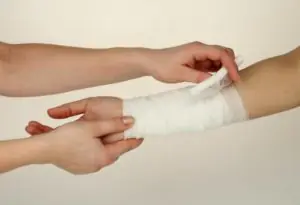
So is it possible to pierce a burn blister?
It takes about two weeks for the symptoms of the lesion to fully recover. The neoplasm is destroyed on its own after two days due to constant exposure to surrounding objects and changes in skin turgor. Due to these factors, fluid is released. Treating a burn with a blister does not take much time.
Typically, burns accompanied by blisters heal in several stages:
- Purulent-necrotic. The bubble is actively growing and filling with liquid contents. The surrounding skin changes color to a redder color. The contents of the blister become light brown. Pus also forms;
- Granulation. At this stage, the bubble breaks out and the epidermis gradually begins to recover;
- Epithelization. Damaged skin is completely restored;
Advantages and disadvantages
Is it possible to pop blisters from burns? Yes, but such manipulation has no advantages. An exception is the situation when the resulting blister limits a person’s physical activity or there is a risk of involuntary injury in unsterile conditions. In these cases, you can pierce the bubble.
But this procedure has many disadvantages:
- risk of infection;
- increased pain and swelling of the damaged area;
- trapped bacteria and dust can provoke suppuration processes;
- in serious cases, tissue death may occur;
- a puncture will require a longer recovery process.
Therefore, there are quite a lot of unfavorable complications from this procedure. Before carrying out this manipulation, you need to take all this into account and decide once again whether you need to pierce or not. Sometimes it is better to consult a doctor and find out whether it is possible to puncture a burn blister.
It is also worth remembering that the listed complications can develop not only due to accidental damage, but also with the intervention of a professional. This happens when recommendations are ignored.
In what cases is puncture necessary?
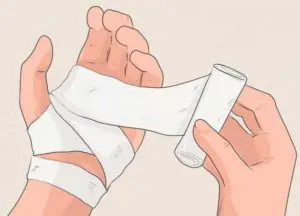
The need for this procedure is related to the location of the blister on the human body. In some areas it can constantly interfere and limit movement. It is worth opening the bubble if it is located:
- on the soles of the feet;
- on the finger;
- in the area of the neck and collarbones;
- on the bends of the upper or lower extremities;
- on the shoulders and back.
If you get a burn in these places, you should puncture the blister. If this is not done, then it will constantly interfere, cling and be squeezed by clothing. Therefore, it is better to pierce it yourself under sterile conditions than to wait for it to burst due to constant pressure. After all, clothes, shoes and household items contain a large number of microorganisms and dirt, which greatly increases the risk of developing an infection.
What to do if a child’s burn blister bursts?
A child's skin is much thinner than that of an adult, and the body is more difficult to tolerate injuries. Therefore, if you receive minimal damage, you must cover the wound with a sterile bandage and go to the hospital.
How to do it correctly
How to properly open blisters from a burn? If a puncture is necessary, you must do everything carefully and follow the doctor’s advice. The manipulation is carried out in the following sequence:
- Before piercing the burn blister, the surface is treated and disinfected with a special agent. To do this, you can use hydrogen peroxide and a special gel. In addition, you need to wipe your hands with an alcohol solution. This will minimize the risk of infection developing in the wound during the procedure;
- Next they move on to sterilizing the instrument. A regular needle is suitable for the puncture procedure. But it must be sterilized and carefully processed. This is done in an alcohol solution. The instrument is completely immersed in liquid. After this, carefully inspect for the presence of rust or dirt to prevent infection from entering the wound;
- When the wound and instruments have been completely treated, you can begin the puncture procedure itself. They do this carefully and slowly. After breaking the integrity of the bladder shell, the contents are carefully drained from it;
- After which a sterile bandage is applied to the injury site.
Carrying out this procedure is not at all difficult. You can do this yourself at home. You just need to follow the correct procedure and follow the recommendations of doctors.
Further treatment and healing
After removing the fluid, it is necessary to change the dressing daily, applying antiseptic agents. If during the treatment it is necessary to use a bactericidal ointment, then do this up to three times a day. Even if the dressing material is sterile, a large number of microorganisms still accumulate on it.
If, after opening the blister, the wound bleeds, then treat with chlorhexidine or similar drugs. In all other cases, ointments should be preferred.
Rapid restoration of the skin can be achieved using products such as Eplan, calendula ointment, Baneocin, Bepanten, Ichthyol and many others. Before applying them, you must wash your hands thoroughly with water. The products must be applied three times a day, maintaining the same interval between them.
If traces of dirt are found in the wound, then treat it with chlorhexidine.
Before the bladder puncture procedure, you need to immediately take care of purchasing restorative ointments and products with antibacterial activity. Sterile materials should also be available.
When should you see a doctor? If any complications arise after the manipulations, you should consult a specialist for advice. Otherwise, there is a risk of infection and subsequent tissue death.
To independently destroy a bladder with lymph, you can resort to using a solution of potassium permanganate. This product is a strong oxidizing agent. Therefore, when applied to the walls of a blister, their thinning occurs.
All interventions to open serious blisters are carried out only by a specialist. You cannot pierce them yourself. Blisters that are not large in size can be opened independently. But you always need to treat the leather and tools.



